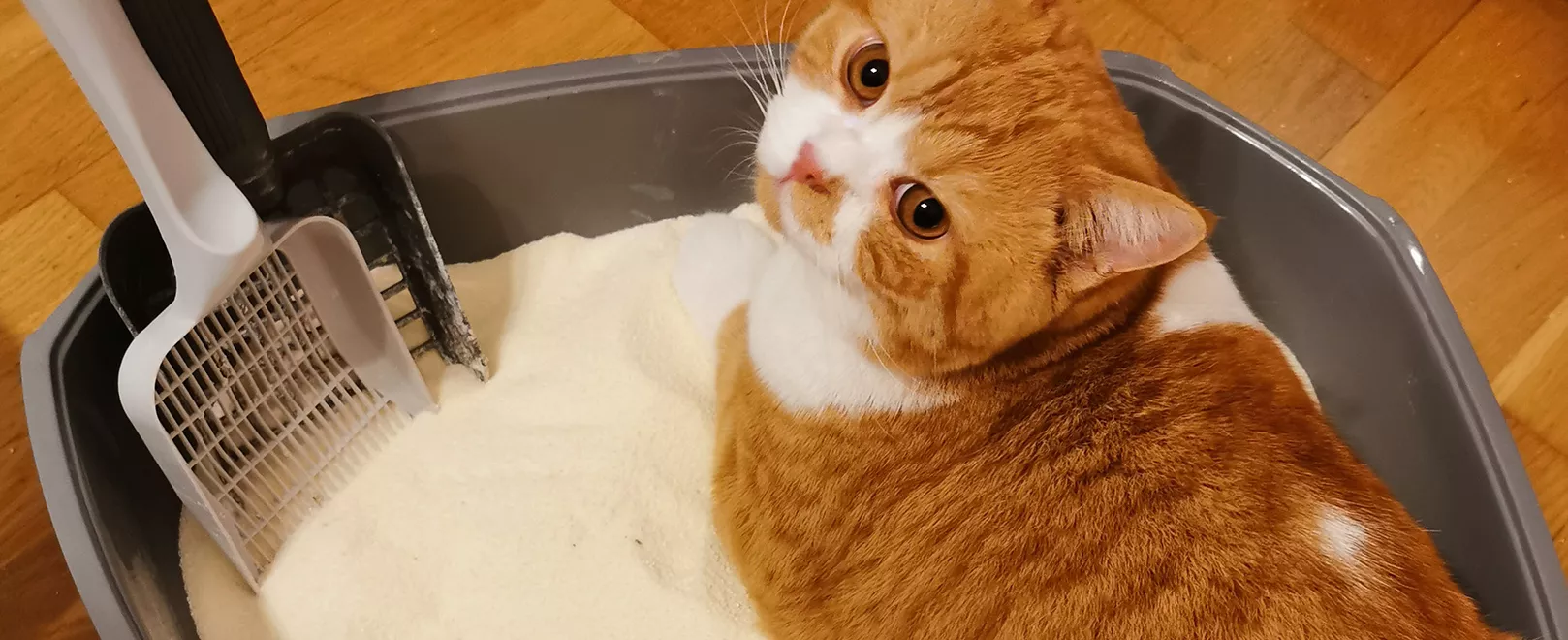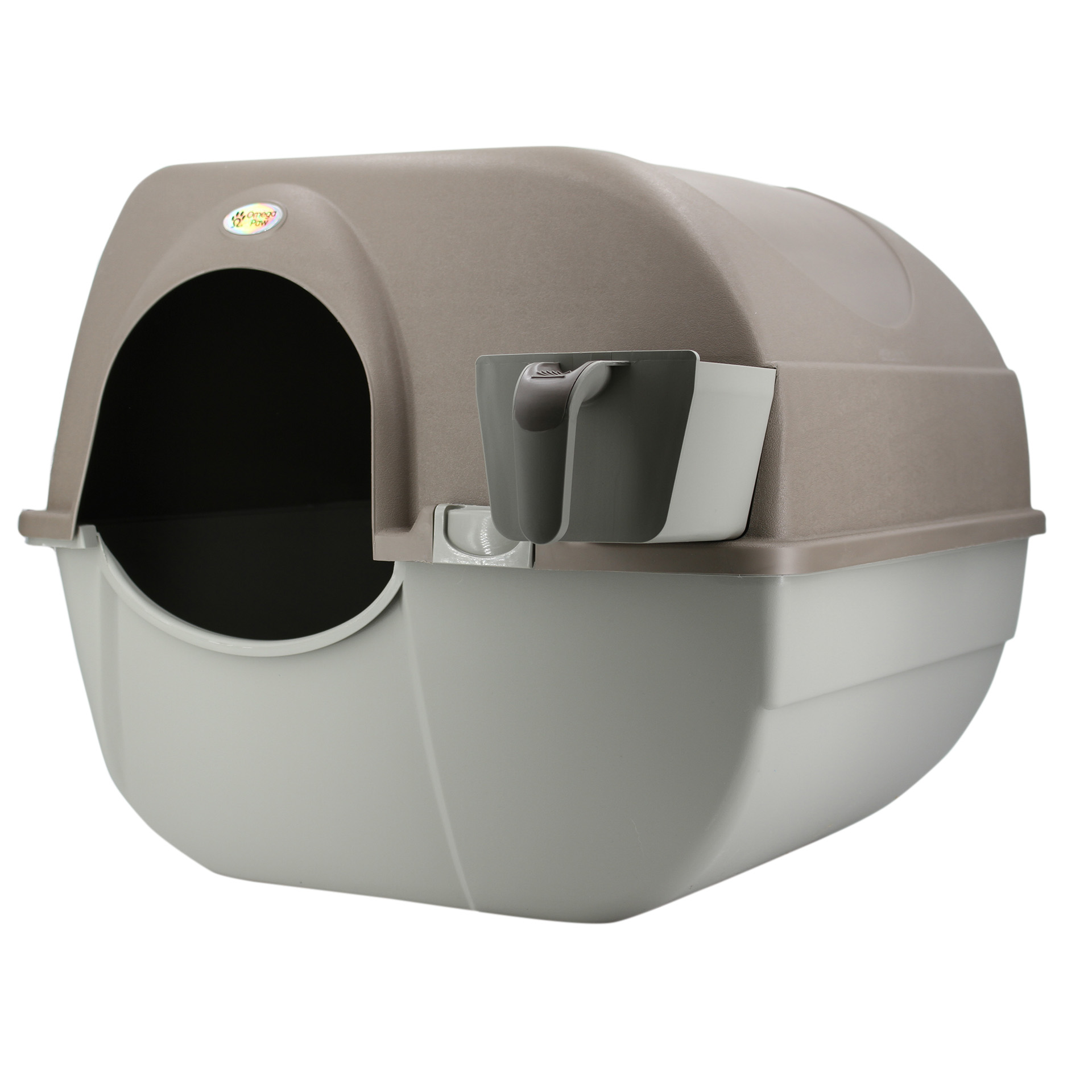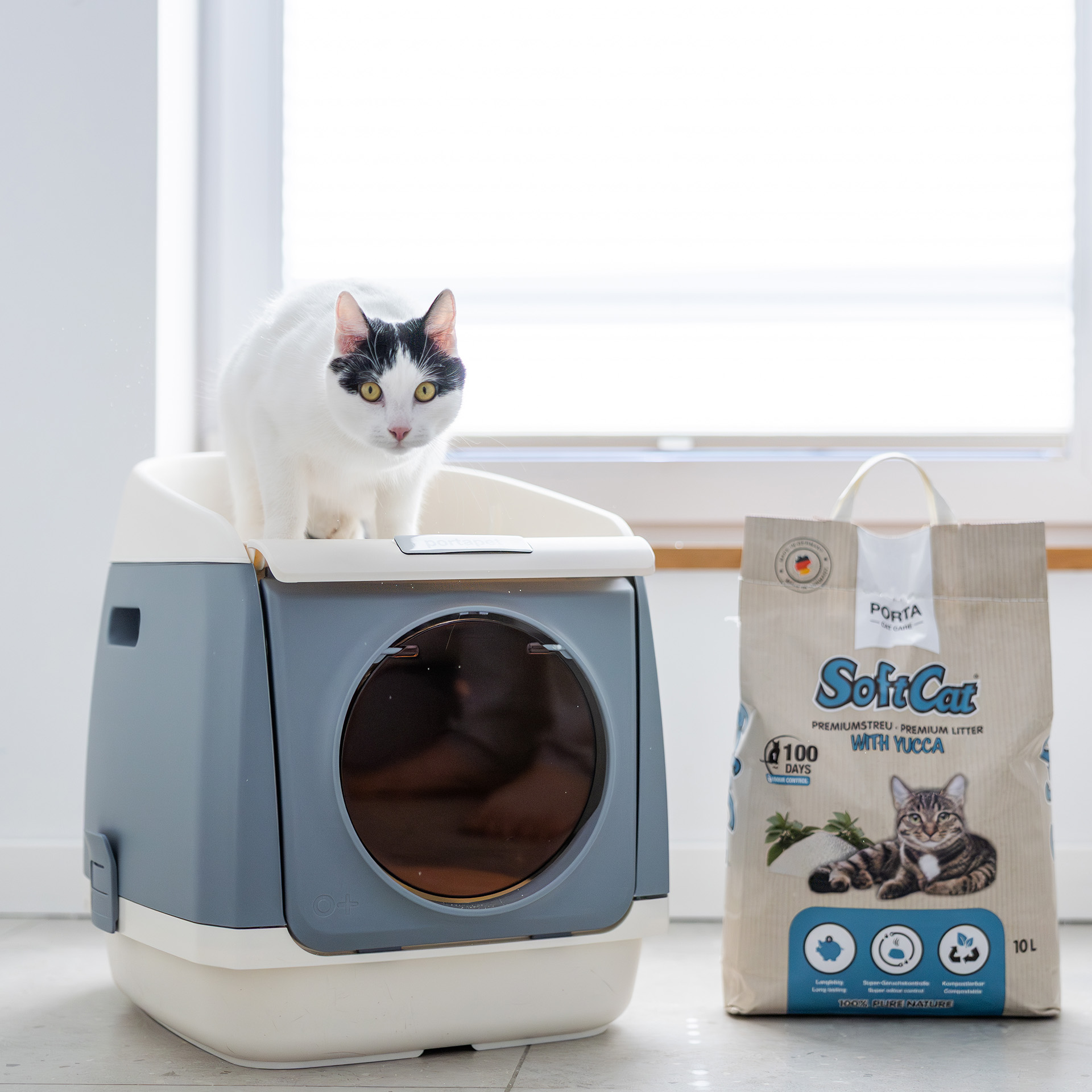
Cleaning the litter box: Ultimate tips for easy litter box cleaning
How often do I have to clean the litter box?
Cats are extremely clean animals and this is particularly evident when they want to do their business: If the litter tray is not clean enough, they may well not want to relieve themselves in it.
As a result, your velvet paw will look for an alternative such as flower pots, carpets or even your shoes - which in turn “really stinks” for you as the owner. It is therefore important that you clean the litter tray regularly.
Reason 1: A clean litter tray protects your cat from pathogens and possible urinary tract infections.
Reason 2: If you keep the litter tray clean and use good litter, bad odors will not stand a chance in your home.
Reason 3: Cats are reluctant to use dirty litter trays.
You must clean the litter tray daily
Clumps and soiling must be removed daily with a litter scoop - preferably 2 to 3 times a day. If necessary, you should refill with fresh cat litter.
You should also regularly clean it completely and change the litter:
- If the litter clumps well: every 1 to 3 weeks - depending on how many cats live in the household and the quality of the litter used. It is best to follow the manufacturer's cleaning recommendations.
- For non-clumping litter: Every few days, as the litter tends to stick to the floor.
How do I clean the litter box properly?
1. Remove clumps: Use the cat litter scoop to dig up the litter so that all clumps and excrement come to the surface and can be sieved out.
2. proper disposal: It is best to place the clumps in a garbage bag placed in an airtight container, such as a diaper pail. Mineral cat litter can simply be disposed of in the residual waste garbage can.
Tip: Ecological cat litter made from plant-based ingredients can be disposed of in compost, organic waste or even in the household toilet. However, please be sure to follow the manufacturer's instructions.
3. mix the litter thoroughly: You should “rake” the remaining clean litter with a shovel to create an even surface.
4. fill up the litter: A constant fill level is important, so make sure there is about 5 to 7 centimeters of litter in the toilet.
Instructions for thorough complete cleaning
1. Empty the litter box: Put the entire contents of the litter tray into a bin bag.
2. Rinse thoroughly: Rinse the tray with warm water and a suitable cleaning agent. Tip: Place the litter tray in the bath or shower. This will avoid making a mess in the home.
3. Remove stubborn soiling: After a short soaking time, you can remove stubborn residues with a sponge.
4. Dry thoroughly: Dry the litter tray completely so that the fresh litter does not stick to the floor.
5. Refill: Fill with fresh litter and place ready for your cat.
Which cleaning products are suitable for the litter tray? Harsh, perfumed household cleaners are not suitable as they disturb the cat's sensitive sense of smell. Ecological cleaners such as vinegar are a good alternative, and there are also special cleaning agents for the animal environment.
4 Practical tips for a clean litter tray
1. Use high-quality litter
A high-quality clumping litter not only saves you a lot of work, but also money. Look for litter that absorbs liquid well and forms firm, compact clumps. This keeps the floor of the litter tray dry and prevents it from sticking together.
The clear advantage compared to other litter: the solid clumps are easy to remove and you don't have to completely replace the litter after just a few days.
2. place a litter collection mat in front of the litter tray
There are special mats and litter collection systems that you can place in front of the litter tray. They prevent the litter from being spread all over the home.
3. Provide one toilet per cat
If you have several cats, each cat should have its own litter box. Experts also recommend providing a spare litter box, especially in large houses. If you have two cats, this would mean at least two, ideally even three litter trays.
4. How to avoid “weight problems” during cleaning
Depending on its size, a litter-filled litter tray can become quite heavy. However, a lightweight ecological cat litter made from natural materials such as grasses or corn can help. It often weighs only a third as much as mineral litter.
Where should I place the litter box?
Your cat's litter box should be placed in a quiet place. This will make your cat feel safe and undisturbed. There should be enough space around the litter tray so that you can clean it easily and your cat can get in and out without any problems. It is best to choose easy-to-clean floors such as tiles or vinyl.
You should avoid carpets. If this is not possible because you have carpeting in your home, for example, a large plastic carpet pad can help.
Conclusion: Cleaning the litter tray is child's play with our tips
To ensure that your cat feels completely comfortable and enjoys using the litter tray, you should:
- Remove clumps and excrement several times a day. This prevents unpleasant odors,
- Use a high-quality clumping litter, as this is more economical and makes regular litter tray cleaning easier
- Use a suitable litter tray and the right accessories. This can significantly reduce the cleaning effort
- Change the litter completely every 1 to 3 weeks.
If you follow these tips, your cat will thank you. A clean toilet contributes to your cat's well-being and keeps your home cleaner and odor-free at the same time.
Our product recommendations:
🐾 For daily cleaning: Litter Lifter cat litter scoop - ideal design for efficient sifting of litter.
🐾 For active scratchers: TOPBox litter box - top-entry litter box, keeps litter inside and makes cleaning easier.
🐾 For maximum odor protection: Cat Residence litter box - keeps litter inside and reduces odors thanks to the built-in activated carbon filter.
🐾 For busy cat owners: Roll N'Clean litter tray - the self-cleaning function saves valuable time when cleaning the litter tray.
🐾 For litter-shedding cats: Ultimate Litter Mat litter collection mat - effectively catches litter that gets stuck to paws.
🐾 For a clumping litter system: Mineral cat litter - forms firm clumps and provides excellent odor control.
🐾 For environmentally conscious cat owners: Plant-based cat litter - light in weight and environmentally friendly to dispose of.



